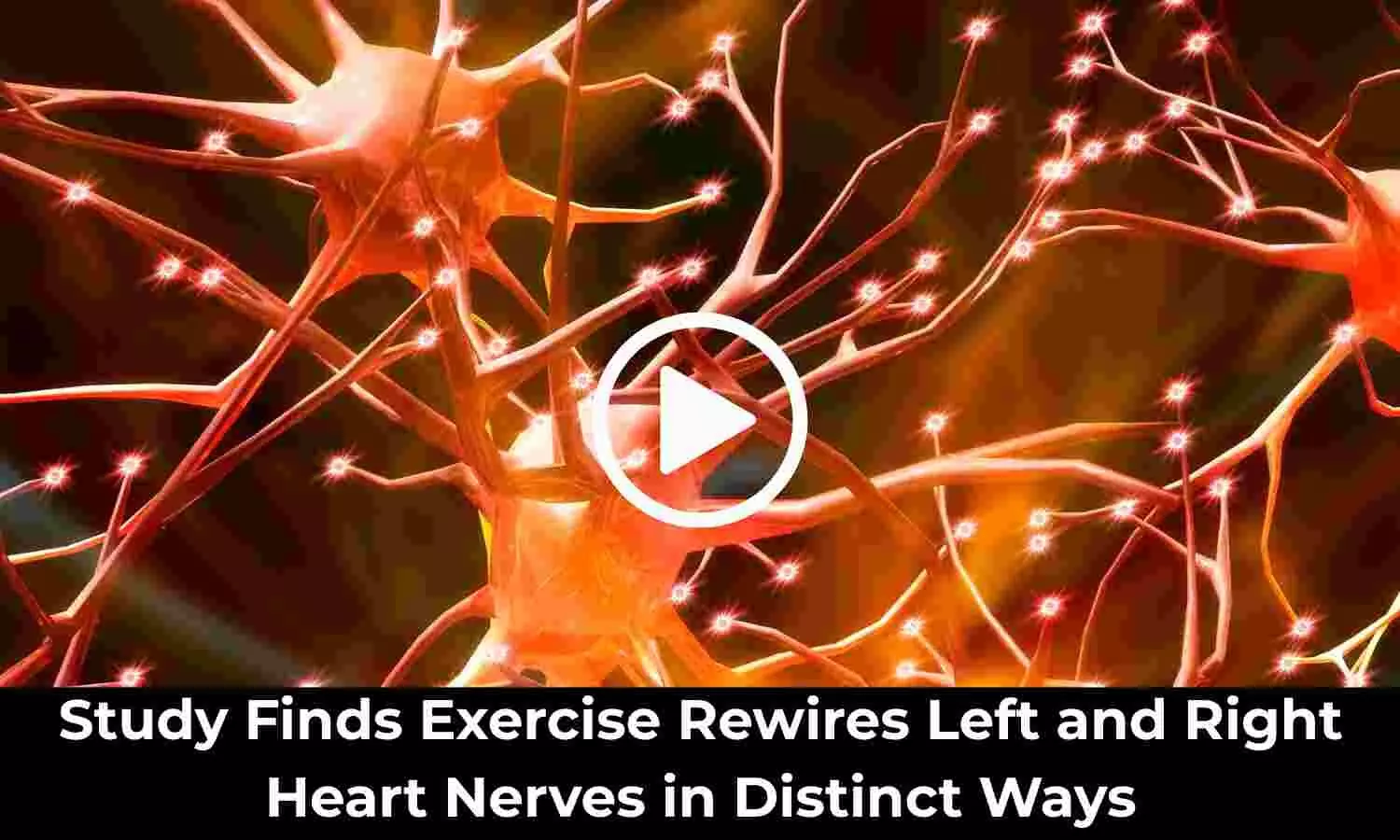Study Finds Exercise Rewires Left and Right Heart Nerves in Distinct Ways
- byDoctor News Daily Team
- 26 September, 2025
- 0 Comments
- 0 Mins

Frequent exercise doesn’t just strengthen the heart – it also changes the nerves that control it, according to new research which could guide more targeted and effective care for common heart problems. The study, led by the University of Bristol (UK), shows for the first time that moderate aerobic training reshapes nerves that drive the heart, and affects them on each side of the heart differently. The research is published in the journal Autonomic Neuroscience. Findings highlighting this marked left-right split could ultimately be used to treat more effectively a range of conditions, including irregular heartbeats,chest pain, angina pain, and ‘broken-heart’ syndrome. Study lead author Dr Augusto Coppi, Senior Lecturer in Veterinary Anatomy at the University of Bristol, said: “The discovery points to a previously hidden left–right pattern in the body’s ‘autopilot’ system that helps run the heart. “These nerve clusters act like the heart’s dimmer switch, and we’ve shown that regular, moderate exercise remodels that switch in a side-specific way. This could help explain why some treatments work better on one side than the other and, in the future, help doctors target therapies more precisely and effectively.” The research used advanced 3D quantitative imaging analysis methods called stereology. Findings showed that trained rats over a 10-week period had around four times more nerves – calledneurons– in the cardiovascular cluster on the right-hand side of the body than the left compared to untrained rats. Conversely, the neurons on the left nearly doubled in size while those on the right slightly shrank. Dr Coppi added: “Understanding these left-right differences could help us personalise treatments for heart rhythm disorders and angina. Our next step is to test how these structural changes map onto function and whether similar patterns appear in larger animals and humans.” Ref:Asymmetric neuroplasticity in stellate ganglia: Unveiling side-specific adaptations to aerobic exercise; Ladd, Fernando Vagner Lobo et al. Autonomic Neuroscience: Basic and Clinical, Volume 0, Issue 0, 103338. Doi: 10.1016/j.autneu.2025.103338
Disclaimer: This website is designed for healthcare professionals and serves solely for informational purposes.
The content provided should not be interpreted as medical advice, diagnosis, treatment recommendations, prescriptions, or endorsements of specific medical practices. It is not a replacement for professional medical consultation or the expertise of a licensed healthcare provider.
Given the ever-evolving nature of medical science, we strive to keep our information accurate and up to date. However, we do not guarantee the completeness or accuracy of the content.
If you come across any inconsistencies, please reach out to us at
admin@doctornewsdaily.com.
We do not support or endorse medical opinions, treatments, or recommendations that contradict the advice of qualified healthcare professionals.
By using this website, you agree to our
Terms of Use,
Privacy Policy, and
Advertisement Policy.
For further details, please review our
Full Disclaimer.
Recent News
BFUHS notifies on round 5 nursing admissions, deta...
- 24 October, 2025
24-year-old Rajasthan MBBS student goes missing in...
- 24 October, 2025
TCT Conference 2025: Here are Top 10 Global Leader...
- 24 October, 2025
Lupin unveils authorized generic version of Ravict...
- 24 October, 2025
Daily Newsletter
Get all the top stories from Blogs to keep track.


0 Comments
Post a comment
No comments yet. Be the first to comment!